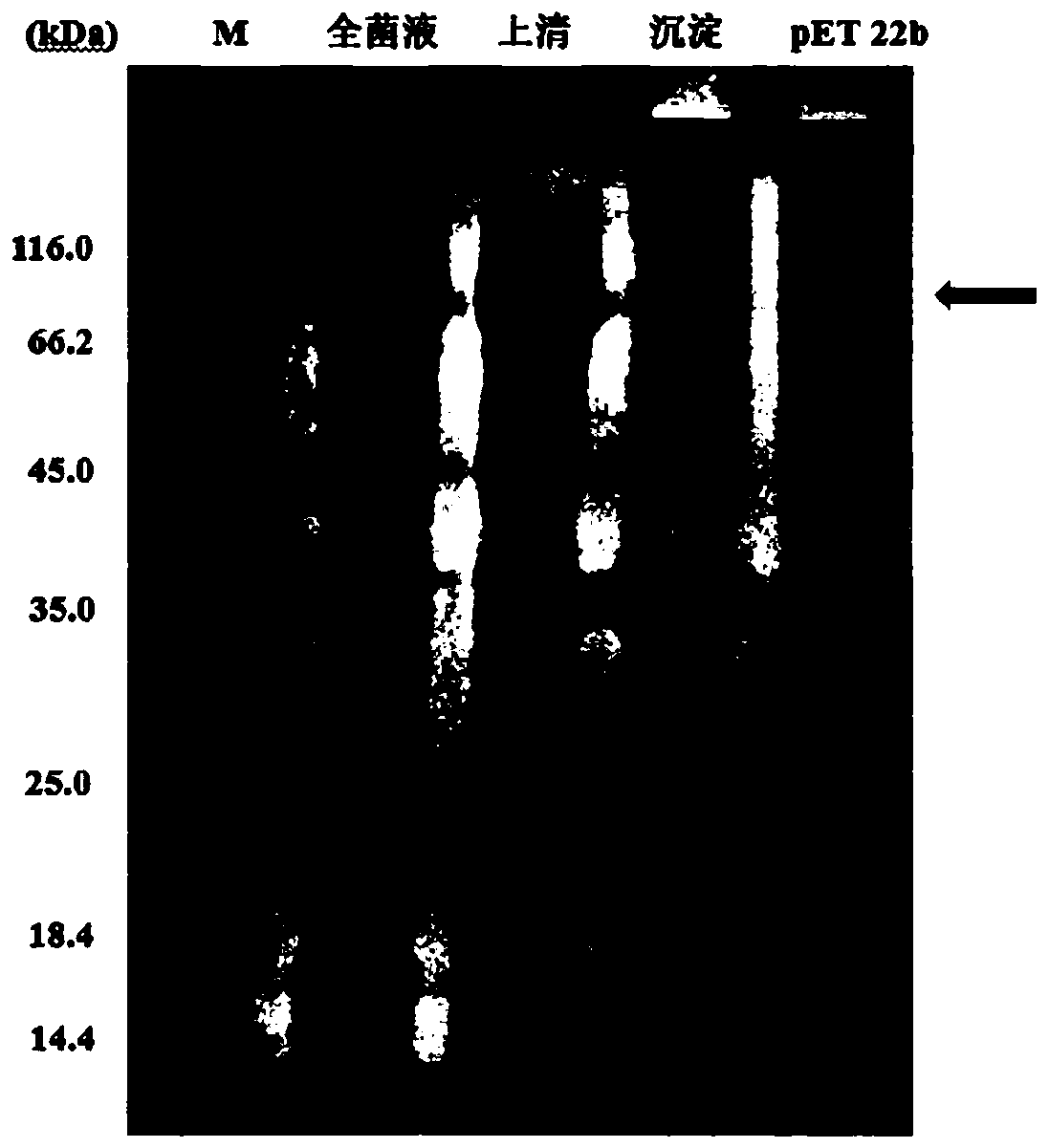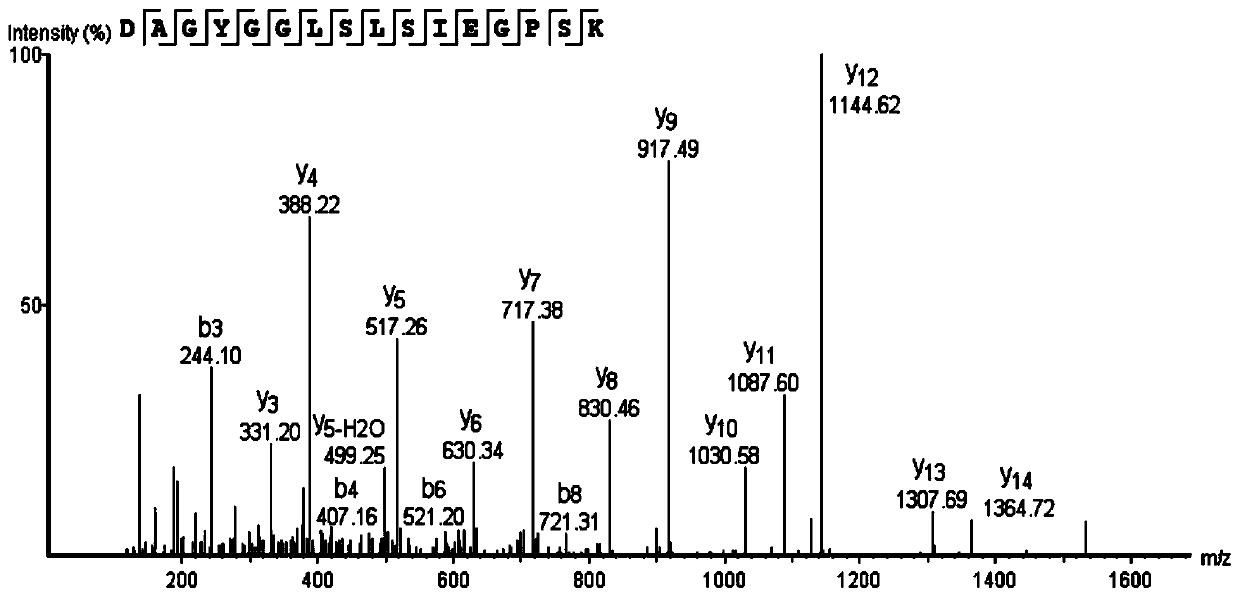Coding gene of scylla paramamosain allergenic protein and application thereof
A technology of imitating blue crabs and encoding genes, which is applied in the fields of application, genetic engineering, and plant gene improvement, and can solve problems such as large molecular weight, hindering the exploration of allergenicity, and increasing the difficulty of cloning
- Summary
- Abstract
- Description
- Claims
- Application Information
AI Technical Summary
Problems solved by technology
Method used
Image
Examples
Embodiment 1
[0052] Example 1 Cloning and expression of the allergenic protein Scy p 9 of Scylla pseudocarpus
[0053] 1. Extraction of total RNA: The extraction of total RNA from Scylla pseudocavea is as follows: Super total RNA extraction kit manual method, the extracted RNA was stored at -70°C after testing its concentration and purity.
[0054] 2. Synthesis of cDNA: The first-strand cDNA was synthesized according to PrimeScript TM II 1st Strand cDNA Synthesis Kit Instructions Method: After adjusting the RNA to an appropriate concentration, prepare mix-1 according to the system in Table 1, mix well, heat at 65°C for 5 minutes, and immediately ice-bath after heating. When mix-1 is heated, mix-2 is prepared. After the heated mix-1 and mix-2 are mixed gently, the first-strand cDNA is synthesized according to the reaction conditions in Table 2. The synthesized first-strand cDNA was stored at -20°C for future use.
[0055] Table 1 Mix-1 and mix-2 preparation table
[0056]
[0057] ...
Embodiment 2
[0081] Example 2 Purification and identification of the allergenic protein rScy p 9 from Scylla pseudocarpus
[0082] Protein purification of the allergenic protein rScy p 9 of Scylla maculae: The supernatant of Example 1 was applied to the pre-equilibrated Ni 2+ - NTA affinity chromatography column (1.0 cm x 5.0 cm). After washing with 100mL eluent (200mmol / L Tris-HCl, 200mmol / L NaCl, 10mmol / L imidazole, pH 8.0) to remove impurities, use 100mL eluent (200mmol / L Tris-HCl, 200mmol / L NaCl , 100mmol / L imidazole, pH 8.0) for linear elution of the target protein, through A 280 and SDS-PAGE analysis, and the purified fractions were collected.
[0083] Mass spectrometric identification of the allergenic protein rScy p 9 in Scylla pseudosyrpa: excised figure 2 The rScy p 9 lane in the middle corresponds to the gel strip of rScy p 9 protein, with a molecular weight of about 90 kDa, which was sent to Micronavi Biotechnology Co., Ltd. (Shenzhen, Guangdong, China) for mass spectrometr...
Embodiment 3
[0084] Example 3 The application of the allergenic protein rScy p 9 of Scylla pseudocarpus in clinical diagnosis
[0085] Nitrocellulose membrane cutting: Cut the nitrocellulose membrane into a rectangle with a length of 28.8 cm and a width of 3.2 cm, and draw squares of 0.8×0.8 cm each on the membrane, a total of 36 grids.
[0086] Allergenic protein spotting: adjust the allergenic protein rScy p 9 purified in Example 2 to a protein concentration of 1 mg / mL, take 2 μL of each cell and directly spot on the nitrocellulose membrane, and let it stand to dry.
[0087] Nitrocellulose membrane sealing: Soak the dried nitrocellulose membrane in 5% skimmed milk and incubate on a shaker at room temperature for 1.5 h.
[0088] Serum incubation: After sealing, the nitrocellulose membrane was washed 3 times with TBST for 5 minutes each time, and the corresponding serum of 16 crustacean allergic patients diluted 1:5 with TBST was cut out from the grid corresponding to the serum in the memb...
PUM
 Login to View More
Login to View More Abstract
Description
Claims
Application Information
 Login to View More
Login to View More - R&D
- Intellectual Property
- Life Sciences
- Materials
- Tech Scout
- Unparalleled Data Quality
- Higher Quality Content
- 60% Fewer Hallucinations
Browse by: Latest US Patents, China's latest patents, Technical Efficacy Thesaurus, Application Domain, Technology Topic, Popular Technical Reports.
© 2025 PatSnap. All rights reserved.Legal|Privacy policy|Modern Slavery Act Transparency Statement|Sitemap|About US| Contact US: help@patsnap.com



